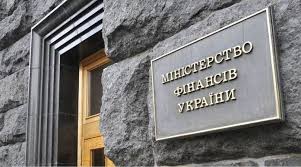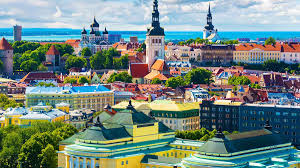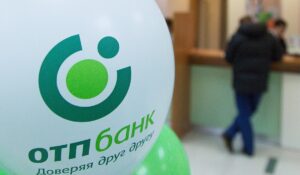
On April 3, the Finance Ministry announced a tender for voluntary insurance of motor vehicles (CASCO), according to the Prozorro e-procurement system.
The total expected cost of the service is 143 thousand UAH. The last day for accepting bids is April 11.

The Ministry of Finance of Ukraine has reminded that as of January 1 of the reporting year 2025, an updated list of states (territories) for transfer pricing purposes came into force.
The Ministry notes that this is provided for by Law No. 3813-IX, adopted on June 18, 2024, on the peculiarities of tax administration during martial law for taxpayers with a high level of voluntary compliance with tax legislation. The list itself was approved by Resolution of the Cabinet of Ministers No. 1505 of December 27, 2024.
It is noted that when determining the list of states for transfer pricing purposes, the Government of Ukraine takes into account the following criteria states (territories) included in the list of offshore zones approved by the Cabinet of Ministers; states (territories) included in the list of states (jurisdictions) that do not implement or improperly implement the FATF recommendations; states (territories) whose competent authorities, based on the results of two consecutive reporting (tax) periods (years), do not ensure timely and complete exchange of information on tax policy with taxpayers, as well as do not exchange data on tax risks.
The Ministry of Finance believes that these changes are important for Ukrainian business, as they relate to the effective management of transfer pricing risks to ensure the financial stability of companies.
As reported, the updated list of states (territories) contains 46 states (territories) instead of 78. The list includes countries from the list of offshore zones approved by the government and the FATF blacklist. FATF, as well as states (territories) that do not ensure timely and complete exchange of tax and financial information.
We are talking about 9 states and territories: American Samoa, Guam, the DPRK, Myanmar, Namibia, the Netherlands Antilles, Alderney, Trinidad and Tobago, and Fiji.
According to the resolution, 41 countries or territories were removed from the list, including: Bahrain, Bosnia and Herzegovina, Brunei, Burundi, Cape Verde, Cape Verde, China Hong Kong Special Administrative Region (EU), Djibouti, Dominican Republic, Ireland, the Autonomous Community of the Canary Islands of the Kingdom of Spain, Cuba, Guadeloupe, Guatemala, Kyrgyzstan, Cyprus, the Autonomous Province of Kosovo and Metohija of the Republic of Serbia, Cuba, Curacao, Laos, Lebanon, Mauritius, and Qatar.
The list also includes the Macao Special Administrative Region of China, the Former Yugoslav Republic of Macedonia, the Federated Territory of Labuan Malaysia, Morocco, Martinique, and the Federated States of Micronesia, Moldova, Montenegro, Oman, Paraguay, the Commonwealth of the Northern Mariana Islands, the Autonomous Region of Madeira of the Portuguese Republic, San Marino, Sao Tome and Principe, Sudan, Timor-Leste, Turkmenistan, Uzbekistan and the United Arab Emirates.
Source: http://relocation.com.ua/ministry-of-finance-updated/

Receipts of taxes, fees and mandatory payments to the general fund of the state budget of Ukraine, according to operational data, in April amounted to UAH 153.6 billion compared to UAH 164.3 billion in March and UAH 184.8 billion in February, such operational data (as of 16:00 on April 30) reported the Ministry of Finance on Tuesday.
According to its data, the most of all reduced receipts of payments from the State Tax Service – to 59.7 billion UAH from 105.7 billion UAH in March and 107.4 billion UAH in February, which is due to high payments in previous months of income tax, in particular, by banks, as well as advance payments.
It is pointed out that in April, income tax revenues amounted to only UAH 3.2 billion against UAH 60.1 billion in March and UAH 61.0 billion in February, but in April, part of its profit of UAH 38.64 billion was transferred to the budget by the National Bank, although the Ministry of Finance does not mention it in the summary.
As for other taxes, personal income tax and military levy increased to UAH 16.5 billion (UAH 15.7 billion) in April, rents to UAH 5.5 billion (UAH 1.4 billion), and excise tax to UAH 11.5 billion (UAH 9.2 billion).
Value added tax also increased to UAH 22.8 billion (UAH 18.0 billion): collected UAH 34.8 billion (UAH 29.0 billion), refunded – UAH 12.0 billion (UAH 11.1 billion).
Receipts from the State Customs Service increased in April to UAH 48.9 billion from UAH 45.8 billion in March and UAH 39.8 billion in February. As the head of the specialized parliamentary committee, Daniil Getmantsev, pointed out on Tuesday, about 2.5 billion hryvnias of additional revenue came from the unblocking of the Polish border over the past week.
The Finance Ministry pointed out that the monthly revenue estimate of the general fund of the state budget, according to operational data, was exceeded by 29.5% (+35 billion UAH), including by the State Tax Service – by 7.9% (+4.4 billion UAH), while the State Customs Service – by 14.5% (+6.2 billion UAH).
In addition, the general fund of the state budget received UAH 2.7 billion of international aid in the form of grants in April, compared to UAH 3.1 billion in March and UAH 31 billion in February.
“In general, according to operational data, at the end of April 2024, the general and special funds of the state budget received UAH 200.8 billion (UAH 225.9 billion in March and UAH 229.0 billion in February) of taxes, fees and other payments. In addition, about UAH 40.1 billion (in March – UAH 39.0 billion) in the form of ERUs was received by the Pension Fund and social insurance funds,” the ministry added, thanking taxpayers for your contribution to the support of the Ukrainian army and financial stability of the country.
Data on expenditures in April are not yet available.
As reported, the Verkhovna Rada adopted the state budget for 2024 with a deficit of UAH 1.57 trillion, or 20.6% of projected GDP. Revenues of the state budget-2024 are set at UAH 1.77 trillion (not taking into account possible grant aid), expenditures – UAH 3.36 trillion at an average annual exchange rate of UAH 40.7/$1.
State budget-2023 revenues amounted to UAH 2.67 trillion, of which grant aid amounted to UAH 0.43 trillion. Cash expenditures of the state budget for the past year exceeded UAH 4 trillion, and the deficit amounted to UAH 1.33 trillion at an average annual exchange rate of about 36.6 UAH/$1.
Earlier Experts Club analytical center and Maxim Urakin released a video analysis of how the GDP of the world’s countries has changed in recent years, more detailed video analysis is available here – https://youtu.be/w5fF_GYyrIc?si=BsZmIUERHSBJrO_3 Subscribe to Experts Club YouTube channel here – https://www.youtube.com/@ExpertsClub.
BUDGET, decreased in April, EXPERTS CLUB, GDP, MACROECONOMICS, MINISTRY OF FINANCE, TAXES, UKRAINE, URAKIN

The Estonian Ministry of Finance expects zero growth of the country’s economy at the end of the current year.
According to the forecast published by the Ministry, the reduction in external demand in the second half of last year was stronger than expected, and the expected turn to economic recovery did not take place. This will have the consequence of the lack of growth in the current year.
The Ministry of Economy notes that last year, the exchange of goods contracted globally, driven by the cooling of the Chinese economy and geopolitical tensions. In developed countries and Europe, this was compounded by the rapid rise in interest rates, which was launched to curb inflation, and the deterioration in capital- and energy-intensive activities due to the energy crisis.
Nevertheless, according to the Ministry’s assessment, the factors restraining the development of the Estonian economy have been receding in recent years: price growth has slowed down, wage growth has continued, interest rates have gradually decreased, and there is no high unemployment.
The Estonian Ministry of Finance prepares a financial and economic forecast twice a year, in spring and summer.
Estonia’s GDP in 2023 has decreased by 3.1%. At the end of March 2024, the Bank of Estonia gave a forecast that the country’s GDP decline would slow down to “minus” 0.6% this year and the economy would grow by 3.2% in 2025.
Earlier Experts Club think tank and Maxim Urakin released a video analysis of how the GDP of the world’s largest economies has changed over the past decades, more video analysis is available here –
https://youtu.be/w5fF_GYyrIc?si=BsZmIUERHSBJrO_3
Subscribe to Experts Club YouTube channel here – https://www.youtube.com/@ExpertsClub
ECONOMIC GROWTH, ESTONIA, EXPERTS CLUB, GDP, MACROECONOMICS, MINISTRY OF FINANCE, URAKIN

The Ministry of Finance of Ukraine has supported the proposal of the Association “Insurance Business” (ASB) and the League of Insurance Organizations of Ukraine (LIOU) on the inadmissibility of VAT taxation of commission remuneration of insurance agents, according to the press release of the ASB.
It is specified that the norm on VAT taxation was contained in the draft law of Ukraine “On Amendments to the Tax Code of Ukraine to improve the taxation of insurance activities in Ukraine”.
As reported, both associations jointly appealed to the Ministry of Finance, the Ministry of Economy, the State Regulatory Service, the National Bank with a request not to worsen the tax conditions of insurance business and not to violate the requirements of the EU Directive.
“Ukraine is moving to the EU, so we must check all tax innovations both with common economic sense and with the principles and norms in force in the European Union,” says Vyacheslav Chernyakhovsky, general director of the Insurance Business Association.
At the same time, the press release specifies that the imposition of VAT on commissions of insurance agents directly contradicts the EU Council Directive No. 2006/112/EC of November 28, 2006 “On the Common System of Value Added Tax”. Article 135 “Exemption from taxation of other activities”, which expressly stipulate that “Member States shall exempt from taxation … insurance and reinsurance operations, including related services provided by insurance brokers and insurance agents.
The report also notes that to substantiate their position, insurance associations have analyzed the performance of insurers of Ukraine for the first nine months of 2023 and conducted a representative survey of market participants. According to the results of which it became clear that the state would not receive economic effect from this innovation, and on the contrary, there would be unpredictable additional costs for administration, control and monitoring of VAT operations in insurance activities.
“According to our estimates, our proposals, supported by the Ministry of Finance, saved each insurance company at least 40-50 thousand UAH monthly,” – said Chernyakhovsky.
insurance agents, MINISTRY OF FINANCE, TAXATION, VAT, АСБ, ЛСОУ

In 2023, OTP Bank was ranked second among commercial banks in the overall rating of primary dealers, according to the Ministry of Finance of Ukraine. In total, the rating includes 11 banks – primary dealers.
OTP Bank ranks fourth among state-owned and commercial banks.
The status of primary dealer ensures the exclusive right to participate in the placement of domestic government bonds conducted by the Ministry of Finance, both on its own behalf and for clients of individuals and legal entities, as well as banks and financial companies that do not have this status.
It is worth reminding that in 2023, individuals – clients of OTP Bank purchased government bonds for a total amount of UAH 6.3 billion in equivalent, and the number of transactions amounted to 2064.

In the fourth quarter of 2023, OTP Bank became the first and currently the only bank to provide its customers with access to a unique service – the opportunity to purchase government bonds directly at auctions of the Ministry of Finance. This option was implemented through the OTP Bank UA mobile application. Already in December, 93.3% of customers who wanted to invest in government bonds used it to purchase government bonds. “This tool has become particularly popular because it offers a 100% guarantee of the state to return funds with interest. In addition, it is an opportunity to contribute to supporting the country’s economy, as government bonds are a loan to the state. When we implemented the possibility of purchasing government bonds through the OTP Bank UA app, many customers began to choose this convenient way of investing money,” said Valeria Ovcharuk, product owner of Private Banking at OTP Bank.
To learn more about the possibility of purchasing government bonds in the OTP Bank UA mobile application, please follow the link.
dealer, GOVERNMENT BONDS, MINISTRY OF FINANCE, OTP BANK, OTP Bank UA, Овчарук